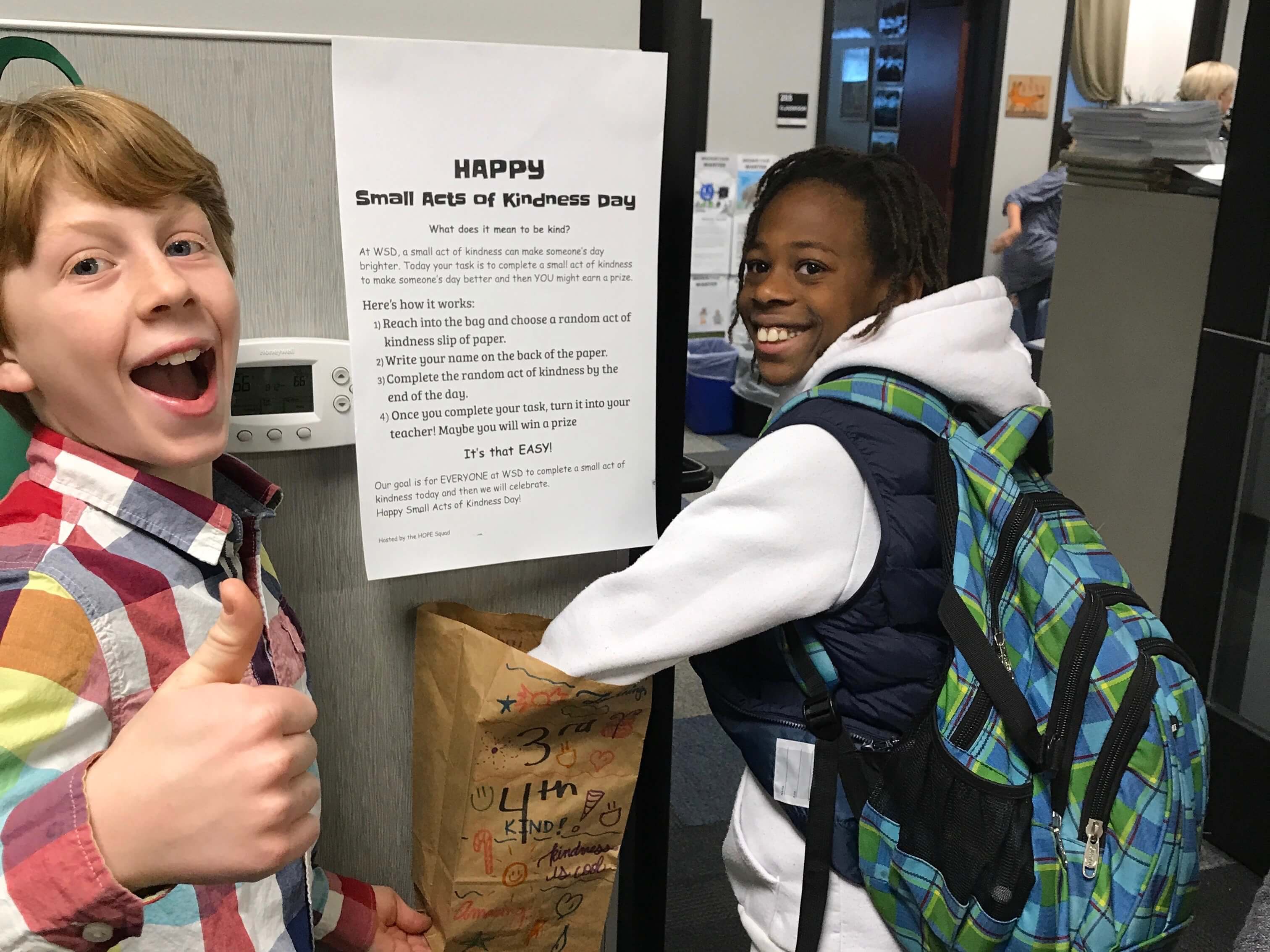WSD enjoyed five fun-filled days of Teacher Appreciation events this spring! During the week of…
7. The Wapiti Way: Character Education at WSD
Cultural commentators agree that we live in an individualistic age — one where the notion of “community” is going by the wayside, even in schools. “You’d think that schools would naturally nurture deep community bonds,” laments New York Times columnist David Brooks. “But we live in an era … that emphasizes individual accomplishments, not community cohesion. Even when schools talk about values, they tend to talk about individualistic values, like grit, resilience, and executive function, not the empathy, compassion and solidarity that are good for community and the heart.”
Weilenmann School of Discovery has always sought to create a community of students, parents and teachers where positive school culture and a close-knit feeling prevail. A line from the WSD Honor Code, created in our first year of operation, states clearly the expectation that all members of our community treat each other with “respect, courtesy, kindness, and in a way that acknowledges the dignity of each person.” In establishing our learning community, WSD recognized from day one the need to embrace, model, explicitly teach, revisit, and effectively weave into the curriculum these and other core values.
“All learning is infused with values,” observes Executive Director Cindy Phillips. “Fostering them is the sine qua non not only for creating positive school culture but for true learning. If we have taught students our subjects but have not taught them how to live and examine their lives, then we haven’t really taught them. All academic learning is whole only within the framework of a well-lived life.”
This then, is the primary purpose behind Character Education. And this year marks an exciting shift at WSD. Building on the framework of shared values already established, WSD began the year by rolling out a character education program called “The Wapiti Way.” Named for WSD’s mascot the “wapiti” (the name for “elk” in Shawnee), it is a school-wide initiative developed through the collaborative efforts of WSD teachers, administrators, and behavioral specialists.
Each month, Lower School focuses on a specific character trait. The first 30 minutes of the day is spent on class discussion and/or an activity that reinforces the character focus. There is a common language and expectation for students, and teachers have the flexibility to tailor a character lesson or discussion to fit the needs of the class. As this trait is revisited again and again throughout the month, teachers identify students who best demonstrate it and then recognize them at an assembly. Examples of traits focused on include respect, responsibility, integrity, empathy, compassion, friendship, accountability, resilience, and gratitude.
In Middle School, members of student government were eager to take the lead and assume the role of watching out for peers who demonstrate character traits such as kindness, respect, being service oriented, friendliness, generosity, compassion, and so on. They recognize their classmates at monthly assemblies with a certificate and a shout-out. “Our Middle School students are building on the skills they learned in Lower School,” explains Steve Williams, Middle School Dean. “They are ready to accept more ownership of their school culture and are pleased to take on more leadership roles. This is also an age when being recognized and supported by peers is especially meaningful.”
Because older students become the de facto role models for younger students, “The Wapiti Way” encourages positive interactions between the Lower and Middle Schools. Middle School students speak at Lower School assemblies, hand out the certificates of character achievement to Lower School students, peer mentor fifth graders, and sign up to be once-a-week class aides for Lower School teachers. Building this inter-school connection is another way to strengthen a caring and close-knit community.
Those who embrace character education are quick to define what it is and what it is not. Educational writer Jessica Lahey (“The Benefits of Character Education,” The Atlantic, May 2013) explains that it is not old-fashioned, and it is not about bringing religion into the classroom. It is about “teaching children how to make wise decisions and act on them. Character is the ‘X factor’ that experts in parenting and education have deemed integral to success, both in school and in life.” Indeed, schools that teach character education, like WSD, can look forward to “higher academic performance, improved attendance, reduced violence, fewer disciplinary issues, reduction in substance abuse, and less vandalism.” Students themselves report feeling safer and more cared for.
These benefits occur best when character education is relevant and woven into the daily curriculum, not when it is artificially tacked on with a poster or a worksheet. “Character is an ongoing group project. All members of the community know that it is their responsibility to take care of self and others,” Cindy confirms, “and every action supports it. Our goal is that our eighth graders leave WSD and continue to build a value-rich community somewhere else. They will know how because they did it here.”







